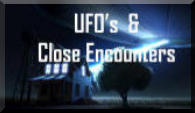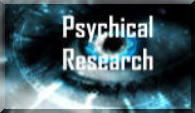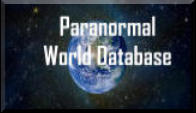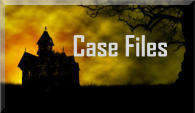BY KEN DE COSTA
"Glad someone is finally addressing this bogus issue of orbs properly. I've been preaching against
orbs being paranormal for years." -
Dale Kaczmarek
Ghost Research Society (on 'The Orb Dilemma')
http://www.ghostresearch.org/
The presence and origin of "orbs" continues to be a topic of debate among paranormal enthusiasts
all over the world. What are these spherical anomalies that continually reveal themselves in
photographs taken at allegedly haunted (and non-haunted) locations? Despite almost overwhelming
evidence to the contrary, many believe these glowing balls of light represent the discarnate spirits of
the deceased that still wandering the Earth. Many point to orbs as globules of energy that serve as a
kind of vehicle necessary to transport the entity in and out of our physical realm. This premise seems
to match up with another popular theory that spirits are comprised of energy and employ it to
manifest themselves.
On the surface, this certainly seems to be validation of their existence, especially to those
anxious to display proof of the supernatural to a public clamoring for it. But do orbs exist as actual
objects, or are they merely photographic misinterpretations brought about by the limitations and
functions of the device used to capture them? Why do many (including yours truly) remain skeptical
of what is being presented as photographic proof of the afterlife? Using some of the most commonly
asked questions or proclamations about these anomalies, let's examine some of the more probable
alternatives to orbs being clear-cut paranormal entities.
You hear about orbs being nothing but dust or moisture particles, but here is a picture
taken in a place with seemingly no dust or moisture present. Therefore, how could
anything anomalous showing up on film be anything but by definition, paranormal?
This is a recurring theme and a common misconception among many who feel they have captured
this "phenomenon" on film. For the most part, it is relatively simple to determine that orbs are
primarily reflections of dust, insects or moisture particles that are extremely close to the lens and
have been illuminated by a camera flash. Stomping on a rug and snapping a quick picture or taking a
photo outdoors during or after a rainstorm will easily reproduce such effects. Particles of dust most
often appear to be transparent, with a smaller percentage giving the appearance of being quite solid.
Here's a quick test you can perform while reading this to see the effects of objects close to a
visual source: Place your finger very close to your eyes and look directly at it. Does it appear you can
see through it? This is much the same as when an object is very close to a camera lens.
The reality is that dust is everywhere, whether we can see it with the naked eye or not. Turning on
a flashlight in a dark room or watching dust cross a ray of sunlight coming through a window will
show you this is true. Even in the cleanest spaces, dust particles are all around us. In fact, a great
deal of these particles are comprised of flakes of skin that naturally and constantly shed from all
living things. While that may be an unpleasant illustration, it is very much a fact of life. As far as
snapping pictures outdoors in locations such as cemeteries, there are so many natural explanations
for what might appear in a photo or what may have caused it that it is difficult - if not downright
impossible - to not dismiss it as being a valid paranormal event.
Dust remains in the air and will redistribute because of air currents, whether caused by wind,
human movement, static electricity or convection (the difference in air temperature between two
surface areas).
Moisture particles, which appear for the most part as solid
white dots, may have what looks like a tail behind them as they
move though the air (right). Such particles won't form unless
there is residual moisture in the atmosphere or on objects
(trees, buildings) that retained it from, say, a rainstorm. The
exception is when relative humidity reaches 100 percent, at
which point it is probable that a mist or dew will form, resulting
in the presence of such particles. Some images show moisture
particles with the tail on the bottom, creating the appearance of
upward movement. Again, wind (or simple air flow) can move
moisture or dust particles in any number of directions quite
easily. They may also abruptly change direction. While you may appear to be in a very calm
environment, air actually continues to flow all about you.
The length of the flash is also an important factor in creating the appearance of leaving a trail.
The farther away the target is from the camera, the longer the flash will take to illuminate the scene
properly. As the flash begins to fade after its initial flare, the continued movement of the moisture (or
insect) will be captured as a fade hence the tail or streak behind the more solid object that was
caught at the initial flash.
If these "orbs" are dust, insects or moisture and all of those have very irregular shapes,
why do they always appear to be circular?
The circular shape (left) is based on
the fact that your camera has an
aperture that is also circular. What you
shoot will take on the same form. Some
cameras may have an aperture that is
diamond-shaped or hexagonal,
therefore causing the orb to take on
that same shape (right). In a nutshell,
it is not necessarily the true shape of
the object you are seeing, but the
camera lens itself causing it to take on
that form. A second, but no less important factor is the distance from the lens to the object in
question. If an object is too close to the lens, it projects itself onto the CCD (the chip that records the
picture in digital cameras) as a flatter image, thereby becoming distorted. Conversely, an object
farther away within the prescribed camera range (or "depth of field") projects itself onto the CCD as a
sharper, more pointed image. This, in summation, is what orbs generally are: distorted images
caused by their close proximity to a single-lens camera.
Multiple photos were taken in rapid succession, but orbs only appeared in one. If dust, etc.
is always present, how can this be explained?
Trickier question. Just be aware that because dust is always present doesn't necessarily mean it will
be in the same spot each time or show itself every time you take a shot. Dust is always moving
through the air and will do so in a cluster for the most part, but certainly not always. Also remember
that when looking through a camera lens and snapping a photo, you are looking at - and capturing - a
very small field of vision.
If dust indeed travels in clusters, why do we see many pictures with only one orb in them?
Because dust is in a constant state of movement, its location and dispersal will always vary from
shot to shot. It is not inconceivable then that a single particle of dust may show up in any particular
photograph. Another thing to bear in mind is that many single-orb photos are of insects. The orb's
circular form, as previously stated, is determined by the shape of the camera aperture and the
distorted appearance is produced by its distance from the camera. The closer to the recommended
depth of field it is, the more defined its shape will be.
Please note: Insects and moisture are very reflective objects when a flash is used and can create
single orbs from a greater distance from the camera than dust, which is duller and does not reflect
light as well. Insects and moisture particles tend to show as solid, white objects (above) while dust
particles emerge as more transparent for the most part.
Other bits and pieces you should be aware of in regards to orb photography are:
•
The use of a flash. Almost all orbs show up when flash photography is used, thereby causing the
necessary illumination to reflect against them. This does not mean they will only show up when a
flash is used. Sunlight may also be a great source of illumination in daytime orb photographs.
•
Orbs tend to show up better on dark backgrounds.
•
The type of camera being used also plays a role: Orbs tend to show up more on compact models
rather than digital single-lens reflex cameras (DSLRs).
•
With a common hand held camera, exposure and focus variances occur automatically within the
camera itself from shot to shot, even when it's moved so slightly that it seems imperceptible.
The zoom features, amount of light present and the distance to the object you are shooting
cannot be easily (if at all) controlled by most people using digital cameras, which are for the
most part the camera of choice these days. Not surprisingly capturing orbs with film cameras is
much rarer, yet not impossible.
•
Shooting pictures around reflective objects like windows, picture frames and even glossy walls
can cause a reflection back into the lens that can easily be misconstrued for something
anomalous.
Some orbs appear to be partially obscured by objects. Does this not prove that these
objects aren't close to the camera lens and have noticeable mass?
Digital cameras have a drawback to them inasmuch as details within the photos they produce tend
to get a bit distorted when taken in areas that are too dark or too bright or where one color tends to
dominate the setting. The more compact models are especially susceptible to this. You should always
look closely at the anomaly when this happens. It almost always will appear to be very faint in color
compared to the object that appears to be obscuring it. The orb, in essence, is being overpowered by
the color or brightness of the object behind it, creating the illusion that the orb is being obscured. If
you enhanced the image with the proper photographic software, you would be able to see that the
orb is in fact positioned in front of the object that appears to be partially blocking it out. Also
remember that these “orbs” for the most part are transparent.
How do you explain orbs that appear to have faces inside them?
Distance to the camera plays a large part in this. Usually those orbs that have been shot closer to the
lens produce this type of detail as they show up larger. The size of the orb will influence how much
structure appears within it, as does the condition of the camera lens itself. A camera lens is actually
made up of a few separate lenses, and all models of cameras tend to vary somewhat. If you have a
smudge or speck of dust on the lens, or two pieces of debris that cross over each other at the time of
the shot, it can affect the appearance of the photo drastically by making the already-distorted image
appear as if it has detail inside it.
In the end, the single most important facet one must always,
always be conscious of is something parapsychologists refer to as
pareidolia. Our brains have an instinctive ability to try to make sense
out of visual chaos. We all are familiar with those Rorschach tests in
which a psychologist shows patients an ink blot and asks what it
represents to them. A more common example we're all familiar with is
perceiving a distinct shape in a random cloud formation. (Any object
that appears to be something other than what it actually is is called a
simulacrum.) These are all very normal reactions and in fact may have
a great deal to do with the human survival trait of being able to
recognize faces from a distance using only a small amount of detail.
This trait may also come into play when presented with varying shades
of light or random images. To the right is one of the more famous examples of mass pareidolia: the
"demonic" face that emerged from the World Trade Center during the 9/11 attack on New York City.
This particular photograph of merging smoke and shadows has been circulated around the world and
labeled by millions as positive proof of a higher power at work during this catastrophic event.
Why do some orbs appear to display color?
In professional photographic terminology, the colors associated with orb photographs fall into the
larger category of "artifacts," which - in the case of cameras - are errors in the perception or
representation of visual information caused by the equipment being used. In the case of digital
photography, this is pixelization. Another term to be aware of is "purple fringing", or the appearance
of what seems to be a purple-colored haze around the outside edge of the orb. An image taken
against a sharply contrasting background (i.e., dark to bright) will at times result in this something
like this:
Many people have a strong belief that various orb colors are based on "moods" or "auras" that
surround the spirit. This is a strong indicator of their own individual belief system, which - while very
important and a vital aspect of anyone's being - may not take any of these mitigating factors into
consideration.
Why is there such a focus on orbs these days? Is this a new phenomenon?
Hardly. In fact, up until a few years ago, orbs were predominantly the sole property of UFO
enthusiasts who were certain these balls of light somehow signaled the presence of extraterrestrial
biological entities who had come to visit our planet. Orbs were theorized to be anything from
miniature spacecraft belonging to a diminutive race of aliens to spy probes sent by curious inhabitants
of a distant galaxy.
What really started the orb craze among paranormal devotees was the advent of the digital
camera. When they first appeared on the market almost 20 years ago, they were a less-expensive
alternative to existing film cameras. There was no film to purchase or administer to, and they
provided pictures without the delay associated with the developing process. For paranormal
enthusiasts this was a boon in terms of cost and time.
The problem for a number of years was these older digital cameras had pixelization issues,
wherein the camera would in essence fill in gaps in the photos, thereby creating what appeared to be
spots or orbs in the photo. Also, the closer proximity of the built-in flash to the lens decreased the
angle of light reflection to the lens, resulting in an increased reflection of light off solid particles,
creating "backscatter" - which, in photographic terms, is what orbs are. The big issue in terms of this
whole mess is that digital cameras display a penchant for losing detail in under and over-exposed
areas. Here is an outstanding example of the difference between shooting an allegedly haunted
location with digital DSLR camera (left) and 35mm SLR (film) cameras submitted by the Australian
Ghost Hunters Society.
Newer models of digital cameras with higher resolution (6 megapixels or greater) have
eliminated much, but not all, of this, and modern advances in digital photography now provide
sharper, clearer pictures than ever before. In fact, today's advanced digital technology provides a vast
array of advantages to its user: Re-doing a photo immediately if you don't like the result and
eliminating photos you choose not to keep are just two small examples of the advantages available.
One of long-standing advantages of film is that the negatives can always be referenced in terms
of legitimizing the photo. This wasn't always the case with digitals. In fact, with the arrival of graphics
editing programs like Photoshop it became easy to manipulate any digital photo to the degree that
forgery would be almost imperceptible except to those with a solid background in forensic
photography. This changed with the development of Exchangeable Image File Format (EXIF) data.
This data is attached to each digital photo and can be read in editing software. It essentially acts like
a negative for digital photos inasmuch as it records exposure information (f-stop, shutter speed,
whether a flash was used) as well as if the photo was somehow altered by another program (like
Photoshop). This, for all intents and purposes, is the digital negative and is vital for analysis.
Is there any such thing as a legitimate photo of an orb? Do they even exist, and how can
you tell you have caught something genuine?
It is extremely rare that anyone takes a picture of something luminous that could also be seen
with the naked eye. Common sense would tell you it's difficult to point and shoot as something
appears and disappears in a fraction of a second. Sheer luck would have to play a huge part in that
scenario. That being said, people have always witnessed strange globes and streaks of light. Being in
the right place at the right time with a camera at hand is another story. I myself have seen weird light
anomalies with my own eyes that defied any rational explanation. Are these spirits or ghosts? It's
easy for the believer to say so, but proof may often somehow elude us. Eliminating all reasonable
causes for these light anomalies, can one say it's paranormal? Certainly.
There is probably a rational explanation for 99 percent of orb photos taken. Frankly, that number
may be a little low. If orbs are photographed in allegedly haunted locations, how does one explain
capturing them in other, decidedly non-haunted places? Simply saying "Ghosts are all around us"
does not begin to address the main issue, which is the simple fact that orbs can be reproduced
quickly and simply by anyone caring to do so.
If you see an anomaly with the naked eye that emits its own source of light and in turn
illuminates objects around it, you may be on to something. I have seen such a thing in the presence
of three others who saw it as well. (Please note the glaring absence of a picture of said object.) There
are also many instances of people seeing bouncing balls of light that have indeed been captured on
film. These remain an enigma and the best possible evidence of something anomalous. One still has
to ask: Is it a naturally-occurring environmental phenomenon or a sign from the spirit world? I think
it's fair to say that everyone has the right to believe what they want to believe.
Barring someone coming forth saying they saw an object at the same time it was photographed
and providing adequate documentation, I have no choice but to conclude that in all but the rarest of
cases, orbs are easily explained away as nothing more than camera artifacts and tricks of light.
With all this being said, how does one use a digital camera to one's advantage during an
investigation and ensure good-quality photographs?
First, let's talk about settings. It is probably best to have your camera on the "sport" mode. This
will ensure a higher shutter speed, making it easier to get clear pictures of an object in motion. A
slow shutter speed can really be a disaster as it most likely will result in any moving object leaving a
trail behind it, which will no doubt lead you into a false positive scenario. Sport mode also is an
advantage in low light and can compensate for camera shake.
A DSLR camera is always a good choice. Much of this naturally depends on what you are able to
spend. I never suggest that anyone go broke investigating the paranormal. An affordable digital
camera may not have all the bells and whistles you would like, but one with the best quality you can
afford should do the trick. It is therefore vitally important that you understand all possible scenarios
I've outlined above when using it during investigations. A lower-end camera should not mean you
have to compromise your investigation by being fooled by that camera's limitations.
Don't mess around with digital zoom. This is something that can be done on a computer when you
upload your pictures. Don't pay extra for this. Your picture resolution is compromised when you use it
anyway.
If you're buying a more compact model, get one with at least 6-megapixel resolution. Make sure
the photo size is set as high as possible. You want to be certain it's using all those megapixels and not
simply the default setting; this will result in much higher quality pictures. Will cameras with a higher
number of megapixels eliminate orbs? Probably not, but they may reduce them to some degree.
Sources: ASSSAP / Eastman Kodak Co./ Cambridge In Color
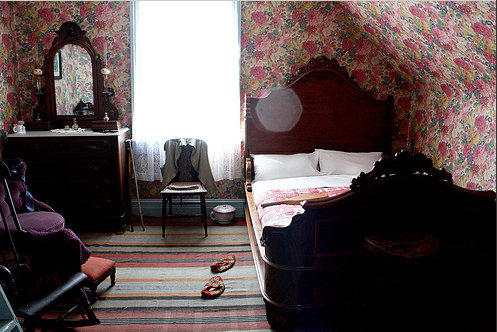

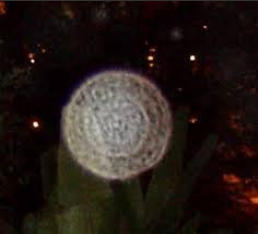
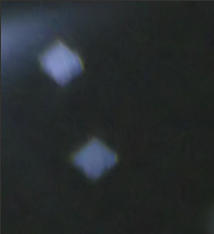
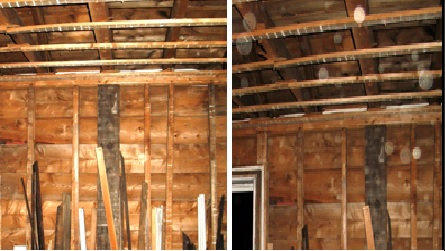
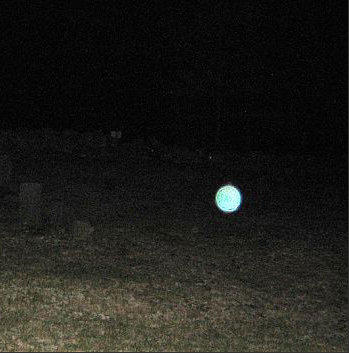
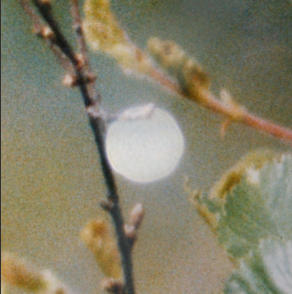
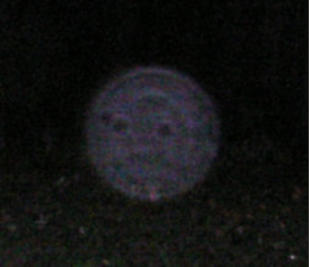

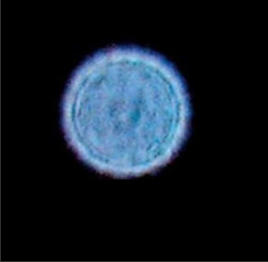

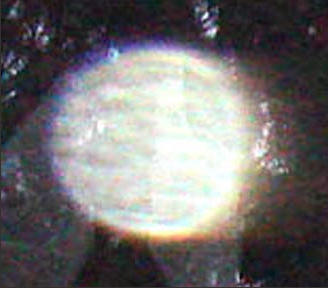
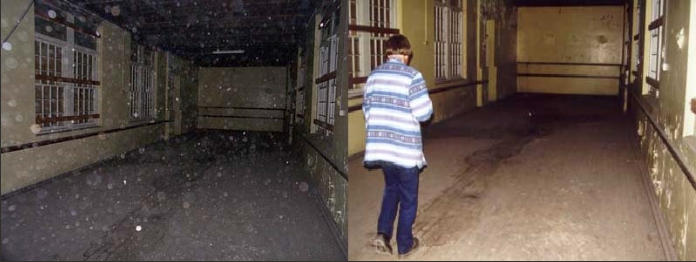
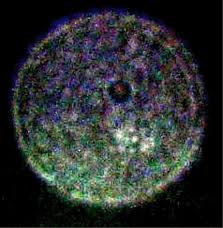
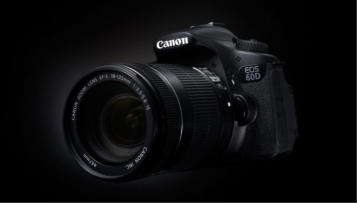
THE ORB DILEMMA





















